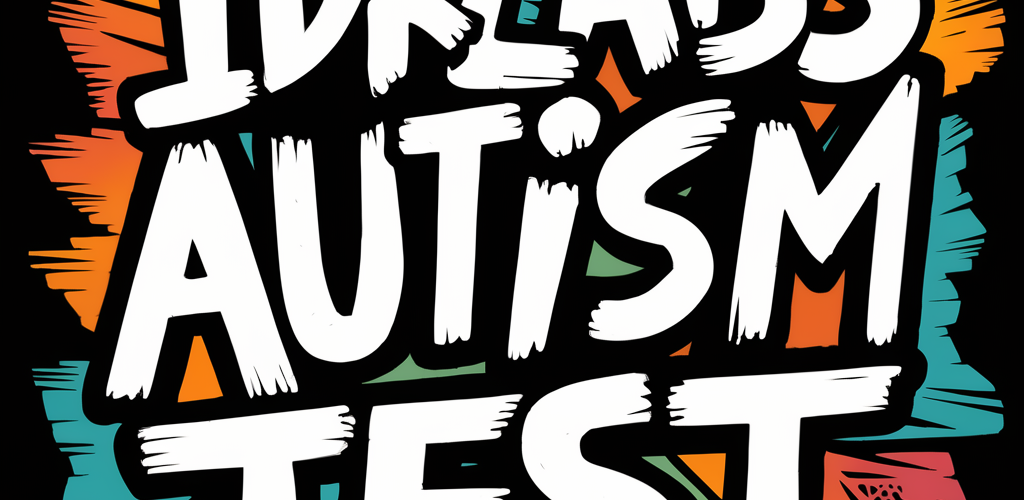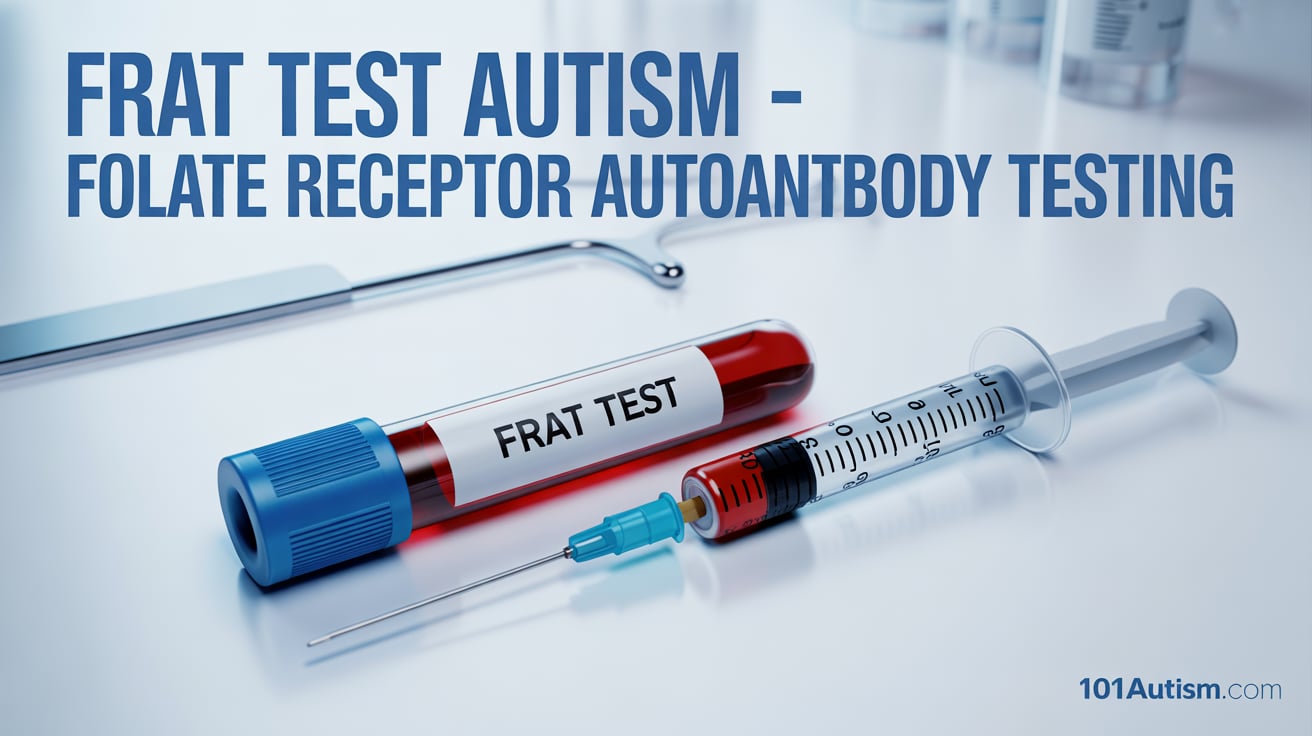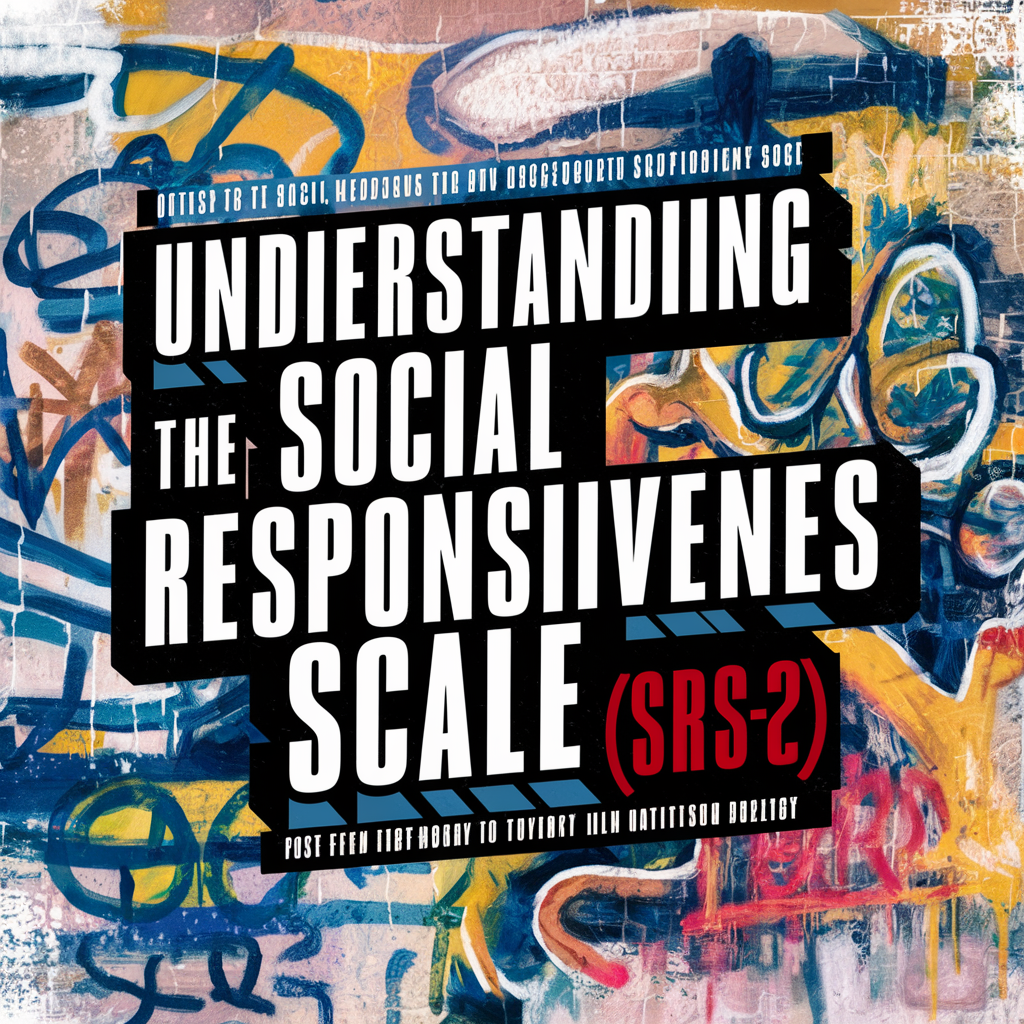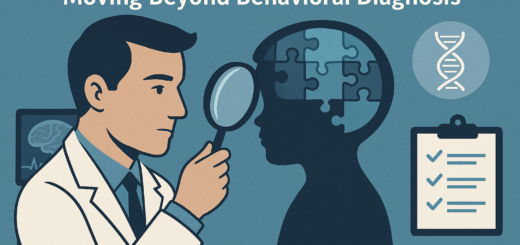Evaluating Autism in Adulthood: An In-Depth Guide to the IDRlabs Autism Test

- Introduction
- What is the IDRlabs Autism Spectrum Test?
- Overview of Autism Spectrum Disorder
- Benefits of the IDRlabs Autism Spectrum Test
- Who Should Take the IDRlabs Autism Spectrum Test?
- How Does the IDRlabs Autism Spectrum Test Work?
- Accuracy of the IDRlabs Autism Spectrum Test
- Analyzing Your IDRlabs Autism Spectrum Test Results
- Pursuing an Official Autism Diagnosis
- Finding Ongoing Support for Autism in Adulthood
- Conclusion
- Frequently Asked Questions about the IDRlabs Autism Spectrum Test
- Reference
- More Readings
Introduction
Autism Spectrum Disorder (ASD) is a complex developmental condition that can make life challenging for individuals who experience it. It impacts how they communicate, behave socially, and relate to the world around them. Living with ASD can be difficult, but it’s essential to know that there are ways to get support and understanding.
If you’re an adult who believes they may be on the spectrum, it can be challenging to know where to turn for help. Recognizing Autism Spectrum Disorder in adults can be more complex than in children, but there are assessment tools like the IDRlabs Autism Spectrum Test that can help. This free, instant online test can give you valuable insights into whether you may be on the spectrum.
In this article, we want to help you understand the IDRlabs autism test – how it works, what it screens for, who should take it, and how to understand your results. Our goal is to provide a compassionate and empathetic approach to help you better understand yourself and your needs. Remember, you’re not alone in this; resources are available to help you.
What is the IDRlabs Autism Spectrum Test?
The IDRlabs Autism Spectrum Test, sometimes called the IDRlabs ASD Test, is an online self-assessment designed to measure autistic traits in adults aged 18 and over. This 10-15 minute test consists of 50 multiple-choice questions based on clinical criteria for autism spectrum disorder.
Clinical psychology researchers developed this test to evaluate social skills, flexibility in thinking and behavior, attention to detail, and other aspects of ASD. It is intended as an initial screening to gauge the likelihood of being on the autism spectrum. The test provides instant results ranging from low to high probability of autism characteristics.
This free online test allows adults to conveniently check for potential Autism from home before pursuing a formal diagnosis. The insights gained can assist individuals in better understanding their neurology.
Overview of Autism Spectrum Disorder
Autism spectrum disorder encompasses a broad range of symptoms and abilities. The hallmark characteristics involve challenges with social communication and interaction and restrictive, repetitive patterns of behaviors or interests. These difficulties appear early in development, typically before age 3.
Autism exists on a spectrum, ranging from low support needs like trouble picking up on social cues to high support needs like being nonverbal. While not a visual condition, Autism does impact how individuals’ brains process the information they take in through their senses.
Today, Autism is estimated to affect 1 in 44 children. Autism statistics show that while diagnosis typically occurs in early childhood, some individuals do not get identified adequately until adolescence or even adulthood. Tools like the IDRlabs test provide helpful screening for Autism later in life.
Benefits of the IDRlabs Autism Spectrum Test
There are many advantages to taking the IDRlabs Autism Spectrum Test as an initial indicator of autism traits:
- Accessibility – The test is free, online, and available anytime. This removes barriers of cost, travel, and scheduling for screening.
- Instant results – Test results are provided after completing the questionnaire, delivering immediate feedback.
- Self-administered – The test allows individuals to identify with autism criteria directly through the questions. One can gain personal insights.
- Raising awareness – The test educates takers about the core symptoms of ASD by asking about social skills, inflexibility, attention to detail, imagination, and more.
- Speed – With only 50 multiple-choice questions, the test takes 10-15 minutes maximum. The brevity makes it fast and low commitment.
- Confidentiality – No registration is required. One’s name, email, or other identifying information is not collected.
- Scientific backing – Designed by clinical psychologists using diagnostic criteria, it ensures the test aligns with autism research.
- Starting point – The tool serves as an initial signal of the likelihood of being on the autism spectrum before formal evaluation.
For these reasons, the IDRlabs Autism Spectrum Test offers an easy, quick way for adults to gain insights into a potential autism diagnosis and determine if further assessment is warranted.
Who Should Take the IDRlabs Autism Spectrum Test?
The IDRlabs Autism Test is ideally suited for a few key groups:
- Adults who exhibit potential autism spectrum disorder symptoms but have never been evaluated
- Individuals previously diagnosed with Autism as children who want to re-confirm that status as adults.
- Parents, partners, friends, or loved ones of adults displaying possible signs of Autism who want to understand the individual’s experiences
- Mental health professionals exploring an autism diagnosis possibility for a patient
- Adults recently diagnosed with Autism who want to learn more about their symptoms and traits
- Anyone asking themselves, “could I be autistic?” or wondering if they should pursue an evaluation
- Individuals who want to gauge where they fall on the autism spectrum
Overall, this online test can provide insights to anyone questioning if they or someone they know may have undiagnosed autism spectrum disorder. It serves as an accessible first step before pursuing formal assessment.
How Does the IDRlabs Autism Spectrum Test Work?
The IDRlabs Autism Spectrum Test uses a digital questionnaire format with 50 multiple-choice questions. No registration is required – users go to the IDRlabs website and click to start the test immediately.
The roughly 10-15 minute test presents questions that evaluate social skills, communication abilities, focus, attention to detail, imagination, routine preferences, sensory sensitivity, and more. These questions align with the criteria used to diagnose autism spectrum disorder formally.
Sample questions include:
- Do you feel comfortable maintaining eye contact during conversations?
- Do you enjoy small talk?
- Do minor noises or distractions easily throw off your focus?
- Do you closely notice details others may miss?
- Do you have repetitive behaviors or movements?
The test presents scenarios about interpreting body language, following social norms, adapting to change, reading fictional stories, and exhibiting a deep focus on interests. Individuals self-report on behaviors, experiences, and tendencies related to ASD.
Once completed, test takers instantly receive a score from 0 (lowest probability) to 100 (highest probability), showing where they fall on the autism spectrum. Higher scores indicate a greater likelihood of autism characteristics.
While not diagnostic, the test serves as a jumping-off point for discussion with loved ones or mental health providers about seeking formal autism evaluation, especially for those falling in the moderate to high score ranges.
Accuracy of the IDRlabs Autism Spectrum Test
The IDRlabs Autism Spectrum Test was designed by clinical psychologists using the latest research on behaviors associated with autism spectrum disorder. While not as comprehensive as in-person clinical evaluation, studies indicate the test can accurately identify autistic tendencies.
In trials of the test on individuals previously diagnosed with Autism by a professional, over 90% scored in the 70+ range, signaling a high probability of ASD. Comparatively, only 10% of neurotypical adults scored over 70 on the test.
Additionally, IDRlabs reports on its website that 80% of people diagnosed with Autism after taking their test first scored over 80 during the screening. This demonstrates alignment between the online test results and later formal diagnostic outcomes.
One limitation is that very high-functioning autistic individuals may score below the ASD threshold if their symptoms are mild. However, research indicates the test effectively identifies social communication challenges, the need for consistency, and poor imagination as key autism markers.
While insufficient for diagnosis, the IDRlabs Autism Spectrum Test demonstrates respectable accuracy in detecting a solid likelihood of Autism, especially when scores land in the explicit high ranges. For informal screening purposes, it can provide a decent initial indicator of whether a complete evaluation may be warranted.
Analyzing Your IDRlabs Autism Spectrum Test Results
The IDRlabs Autism Spectrum Test provides a scored assessment ranging from 0 to 100. But what do different scores mean when analyzing your autism likelihood?
Here’s an overview of how to interpret your IDRlabs autism test results:
- 0-24 – Low probability of autism spectrum disorder. Typical social skills and communication abilities.
- 25-50 – Some autism spectrum characteristics may be present. Further evaluation is likely not needed unless severe symptoms are observed.
- 51-69 – Moderate probability of autism traits. Consider seeking a formal diagnosis if symptoms cause interpersonal or occupational disruptions.
- 70-89 – High probability of being on the autism spectrum based on screening results. Pursue comprehensive diagnostic assessment.
- 90-100 – Very high probability of autism spectrum disorder. Official diagnosis recommended to access supportive resources.
The higher your score, the more aligned your reported traits are with autism diagnostic criteria. Compare your total score with your most vital subdomain scores like social skills or attention to detail to gain further insights.
Keep in mind that only a formal clinical diagnosis can definitively confirm an autism spectrum disorder. However, pursuing a professional evaluation is wise if your results reveal moderate to high ASD tendencies. Use your test insights to open a discussion with your loved ones or doctor.
Pursuing an Official Autism Diagnosis
If your IDRlabs Autism Spectrum Test results indicate an elevated probability of ASD, taking steps to obtain an official diagnosis is advised. Here is an overview of the autism diagnosis process:
- Find an autism specialist – Search for a psychologist, psychiatrist, neuropsychologist, or clinic specializing in autism spectrum disorder. Finding someone well-versed in ASD ensures an informed evaluation.
- Schedule an appointment – Call or email the provider to book your diagnostic appointment. Ask for any intake forms to be sent for completion ahead of time.
- Interview – Expect to answer questions about your developmental history and current socialization, behavior, and communication challenges.
- Assessments – A battery of tests will evaluate IQ, neuropsychology, language, adaptive functioning, and ASD-specific tools like ADOS-2 or ADI-R.
- Input from others – The doctor may interview parents, spouses, or others close to you for supplementary observations.
- Multi-factored analysis – The clinician will synthesize your interview responses, test results, behaviors observed, and input from your support network to reach a diagnostic conclusion.
- Diagnosis – The provider analyzes all gathered data against criteria in the DSM-5 to determine if you meet the threshold for an autism diagnosis, either Level 1, 2, or 3, based on support needs.
- Next steps – If diagnosed, the clinician should guide you toward local services, therapy referrals, job training programs, support groups, and other resources to help you thrive as an autistic adult.
While comprehensive, undergoing an accurate autism evaluation is essential to accessing individualized support. Let your screening results propel you toward answers.
Finding Ongoing Support for Autism in Adulthood
Getting diagnosed with autism spectrum disorder as an adult is a pivotal but often challenging moment. Following diagnosis, it’s critical to know your options for autism-focused support and community. Here are recommendations for accessing help after your evaluation:
- Ask your diagnosing provider for referrals to local autism therapists, job training programs, support groups, and transition services to help connect you with resources.
- Look for an autism support group for adults in your area through organizations like Autism Speaks. Connecting with other autistic adults can combat isolation.
- Consider enlisting a therapist who specializes in helping autistic adults with social skills training, managing emotions, improving communication abilities, and handling sensory issues.
- Explore vocational rehabilitation offerings that can assist you in securing stable employment suited to your strengths and needs as an autistic person through tailored training and workplace support.
- See if speech, occupational, or physical therapy tailored to challenges often accompanying Autism could help build practical life skills and address needs like motor coordination.
- Look into assistive technologies like communication devices, apps, and tools designed to support independent living and social connections for adults on the spectrum.
- Talk to your primary doctor about whether you may benefit from medication to help manage co-occurring mental health conditions like anxiety or ADHD commonly associated with ASD.
- Consider forming an integrated care team with your primary doctor, therapist(s), and case manager to holistically address your physical health, mental health, relationships, job status, living situation, and more.
- Tap into national autism organizations for advocacy opportunities, mentoring programs, social events, and guidance to help you keep gaining understanding as an autistic adult.
While Autism is lifelong, the proper professional support and community connections make a profound difference in confidence, security, and purpose after diagnosis.
Conclusion
For adults observing atypical behaviors or social difficulties in themselves, online autism tests like the IDRlabs assessment provide an easily accessible starting point for gaining insights and checking for signs of ASD. This free 10-15 minute test evaluates social skills, communication style, imagination, attention to detail, and the need for routine to gauge the probability of autism characteristics.
While not definitive, elevated results lend clues if pursuing formal autism testing could lead to a diagnosis and subsequent access to supportive services. Whether self-exploring your neurology or wondering about a loved one’s unexplained quirks, let the IDRlabs Autism Spectrum Test launch your fact-finding mission to make sense of the possibilities. By better understanding the characteristics, you can take your first steps toward helping yourself or someone you care about live more comfortably in their skin.
Frequently Asked Questions about the IDRlabs Autism Spectrum Test
Q: Who should take the IDRlabs autism test?
A: This test is designed for adults 18+ who exhibit potential signs of ASD or wonder if they should be evaluated.
Q: What types of questions are asked?
A: 50 multiple-choice questions evaluate social skills, attention, flexibility, imagination, and other autism traits.
Q: How long does the test take?
A: Approximately 10-15 minutes. The brevity makes this a quick screening tool.
Q: What is the cost of taking the test?
A: It is free to take the IDRlabs autism spectrum test online.
Q: How accurate is the test?
A: Studies show it accurately detects autism likelihood, especially when scores are in the high ranges. However, clinical evaluation is still required for diagnosis.
Q: What format do results take?
A: You receive a score from 0 to 100, showing the probability of Autism, with higher scores indicating a greater likelihood of ASD characteristics.
Q: Can I retake the test?
A: Yes, you can retake the test. It’s recommended to wait before retesting for the most accurate results.
Q: Does this test provide an official diagnosis?
A: No. To receive an actual autism diagnosis, a comprehensive clinical evaluation is required. This is just a screening.
Q: What should I do with my results?
A: Discuss the results with loved ones. If scores suggest a high probability of ASD, consider seeking professional diagnosis and support.
Reference
- (Ashwood et al., 2016) – Discusses the predictive ability of the Autism-Spectrum Quotient (AQ) in diagnosing autism spectrum disorder (ASD) in adults.
- (Lord, Rutter, & Couteur, 1994) – Describes the Autism Diagnostic Interview-Revised (ADI-R), a diagnostic interview for caregivers of individuals with possible pervasive developmental disorders.
- (Woodbury-Smith et al., 2005) – Evaluates the Autism Spectrum Quotient (AQ) for its potential as a screening questionnaire in clinical practice for adults suspected of having Asperger Syndrome or high-functioning autism.
- (Belva et al., 2012) – Investigates the convergent validity of the Autism Spectrum Disorders-Diagnostic Adult (ASD-DA) assessment.
- (Mesibov et al., 1989) – Examines the use of the Childhood Autism Rating Scale (CARS) with autistic adolescents and adults.
- (Baron-Cohen et al., 2006) – Adapts the Autism Spectrum Quotient (AQ) for children and assesses its validity.
- (Huang et al., 2020) – Provides a scoping review on autism diagnosis in adulthood.
- (Grodberg et al., 2016) – Discusses a simplified diagnostic observational assessment of autism spectrum disorder in early childhood.
- (Ruzich et al., 2015) – Reviews the Autism-Spectrum Quotient (AQ) in a nonclinical population sample.
- (Baron-Cohen et al., 2001) – Introduces the Autism-Spectrum Quotient (AQ) and evaluates its validity.
More Readings
- FRAT Test Autism: Complete Guide to Folate Receptor Autoantibody Testing

- PRE-ASSESSMENT CLINICIAN CHECKLIST
- Understanding the Social Responsiveness Scale (SRS-2)

- Are You Neurodivergent? Take the Neurodivergent Test and Find Out

- Late Diagnosis Autism Female: 5 Surprising Truths About Why Women Are Discovering They’re Autistic in Adulthood






1 Response
[…] Better Understanding of Lifespan Issues: The registry’s focus is on collecting data across the lifespan. This will help address the nee… […]